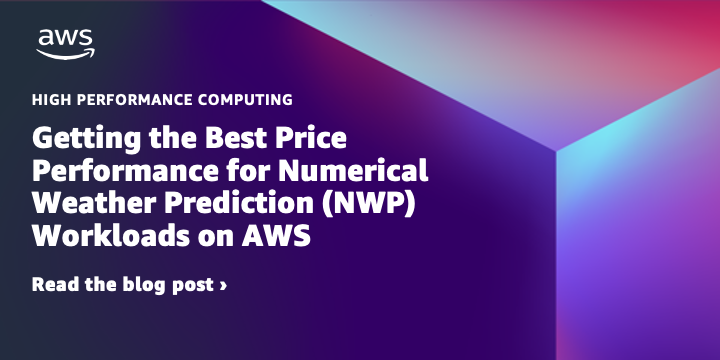AWS HPC Blog
Tag: Weather
Slurm REST API in AWS ParallelCluster
Looking to integrate AWS ParallelCluster into an automated workflow? This post shows how to submit and monitor jobs programmatically with Slurm REST API (code examples included).
New: Research and Engineering Studio on AWS
Today we’re announcing Research and Engineering Studio on AWS, a self-service portal to help scientists and engineers access and manage virtual desktops to see their data and run their interactive applications in the cloud.
EFA: how fixing one thing, led to an improvement for … everyone
Today, we’re diving deep into the open-source frameworks that move MPI messages around, and showing you how work we did in the Open MPI and libfabrics community lead to an improvement for EFA users – and everyone else, too.
Introducing login nodes in AWS ParallelCluster
AWS ParallelCluster 3.7 now supports adding login nodes to your cluster, out of the box. Here, we’ll show you how to set this up, and highlight some important tunable options for tweaking the experience.
How Maxar builds short duration ‘bursty’ HPC workloads on AWS at scale
In this post, we hear from Maxar’s WeatherDesk team on how they deploy their HPC workloads using a “fail fast” software development technique so they can be sure of meeting customer deadlines for their business.
Deep-dive into Hpc7a, the newest AMD-powered member of the HPC instance family
Today we discuss the performance results we saw from the new hpc7a instance, running HPC workloads like CFD, molecular dynamics, and weather prediction codes.
Instance sizes in the Amazon EC2 Hpc7 family – a different experience
Hpc7g is the first Amazon EC2 HPC instance offering with multiple instance sizes, but this is quite different from the experience of getting smaller instances from other non-HPC instance families. Today, we want to take a moment to explore why this is different, and how it helps.
Application deep-dive into the AWS Graviton3E-based Amazon EC2 Hpc7g instance
In this post we’ll show you application performance and scaling results from Hpc7g, a new instance powered by AWS Graviton3E across a wide range of HPC workloads and disciplines.
Getting the Best Price Performance for Numerical Weather Prediction Workloads on AWS
In this post, we will provide an overview of Numerical Weather Prediction (NWP) workloads, and the AWS HPC-optimized services for it. We’ll test three popular NWP codes: WRF, MPAS, and FV3GFS.
How to Arm a world-leading forecast model with AWS Graviton and Lambda
The Met Office is the UK’s National Meteorological Service, providing 24×7 world-renowned scientific excellence in weather, climate and environmental forecasts and severe weather warnings for the protection of life and property. They provide forecasts and guidance for the public, to our government and defence colleagues as well as the private sector. As an example, if you’ve been on a plane over Europe, Middle East, or Africa; that plane took off because the Met Office (as one of two World Aviation Forecast Centres) provided a forecast. This article explains one of the ways they use AWS to collect these observations, which has freed them to focus more on top quality delivery for their customers.







